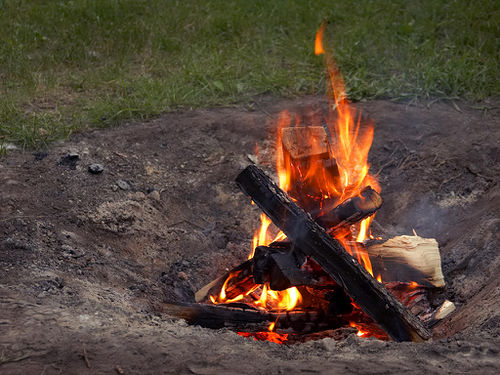Earth Pit Kiln
Jump to navigation
Jump to search
One of the simplest ways of turning biomass into charcoal is the “earth pit kiln”. It turns out that it also gives a very clean burn that allows for the production of high-quality biochar. It is less useful for making traditional charcoal. This is because most of the volatiles (gases, liquids, tars, etc. - basically, pyrolysis oil) are driven off and burned by this method and therefore lost from the energy content.
A similar type of pyrolysis is achieved by the more sophisticated Kon-Tiki Kiln.
In addition to char production, the heat generated in the pit kiln can be used for other products, such as pottery and other ceramics. These products may or may not be comparable in quality to those from a dedicated firing.
Advantages of Pit Kiln
- Cheap, easy, low-tech.
- Can be expanded simply by further digging (say, if you have a lot of long, thick branches that would not fit into a metal kiln and that you don't want to chop).
- Can have permanent pipes installed for easy quenching.
Disadvantages of Pit Kiln
- Can be more dangerous than a Kon-Tiki or other metal kiln. Don't fall into it.
- The pit is obviously labor-intensive to dig.
- Also, a hole in the ground is not transportable, whereas the Kon-Tiki Kiln can be brought to wherever your biomass is.
- One of the downsides of the earth pit kiln is that the surrounding soil may soak up a lot of the heat, especially if the soil is cold or moist. Then the temperature at the bottom of the burn may remain too low to produce biochar of optimal quality (should be at least 400-450C°, better to have higher temperature well above 550-600°C). This may not be a problem if you are charring a large amount of material so that the burn lasts a long time, allowing the surrounding soil to heat up sufficiently. The Kon-Tiki Kiln avoids this whole problem. A permanent brick lining together with insulation material such as glass wool could also solve the problem. That would be the deluxe version of the pit kiln.
- Contamination with soil. Not really a big deal in most cases but might be a problem for niche applications such as using biochar as a food additive.
